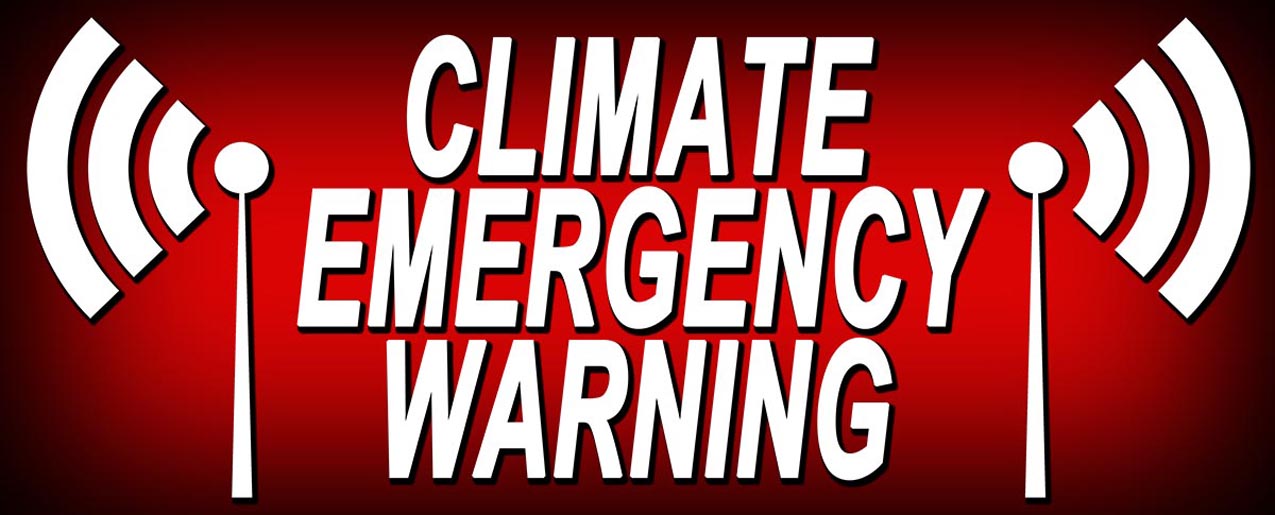
A review of Ripple et al., World Scientists’ Warning of a Climate Emergency 2022, Bioscience, October 26, 2022.
The report opens, “We are now at “code red” on planet Earth. Humanity is unequivocally facing a climate emergency. The scale of untold human suffering, already immense, is rapidly growing with the escalating number of climate-related disasters. Therefore, we urge scientists, citizens, and world leaders to read this Special Report and quickly take the necessary actions to avoid the worst effects of climate change.
2022 marks the 30th anniversary of the “World Scientists’ Warning to Humanity,” signed by more than 1700 scientists in 1992. Since this original warning, there has been a roughly 40% increase in global greenhouse gas emissions. This is despite numerous written warnings from the Intergovernmental Panel on Climate Change and a recent scientists’ warning of a climate emergency with nearly 15,000 signatories from 158 countries (Ripple et al. 2020). Current policies are taking the planet to around 3 degrees Celsius warming by 2100, a temperature level that Earth has not experienced over the past 3 million years (Liu and Raftery 2021). The consequences of global heating are becoming increasingly extreme, and outcomes such as global societal collapse are plausible and dangerously underexplored (Kemp et al. 2022). Motivated by the moral urgency of this global crisis, here, we track recent climate-related disasters, assess planetary vital signs, and provide sweeping policy recommendations.”
Excerpts: “Climate change has increased the frequency and intensity of severe weather events across the world… We are now regularly seeing events and disasters that previously occurred only rarely… In the summer of 2022, one third of Pakistan was flooded, displacing 33 million people and affecting 16 million children… terrifying wildfires in Europe, back-to-back cyclones and subsequent flooding in eastern Australia, numerous rivers drying up in China and Europe, an extraordinarily intense hurricane striking the Southeastern United States, powerful storms and extensive flooding in Bangladesh and India, megafires and a continuation of the decadal drought in the western United States, a massive flood that closed Yellowstone National Park, and unusually severe heat waves or “heat domes” in many parts of the Northern Hemisphere…”
Sixteen of thirty-five planetary vital signs are at record extremes; “Three major greenhouse gases—carbon dioxide, methane, and nitrous oxide—all set new year-to-date records for atmospheric concentrations in 2022… Ocean heat content rose greatly in 2021 and is now at a record high… The number of extremely hot days has nearly doubled since 1980… Globally, roughly 500,000 deaths between 2000 and 2019 were heat related… Impacts may not track linearly with global heating. Models indicate that this leaping pattern or threshold response may be the case in the United States for both the area burned by wildfires and the number of inland floods that have caused at least US$1 billion dollars in damages… global wildfire activity appears to be exhibiting a rapid increase since 2009.”
Feedback loops are upon us; “Rising temperatures increase the risks of feedback loops and tipping points being triggered, including permafrost thawing and Amazon forest dieback… Higher temperatures will increase the risk of cascading effects such as disease and conflict, as well as heighten the probability of and our vulnerability to other catastrophic threats… The increasing frequency and intensity of climate disasters emphasizes the need for immediate mitigation and adaptation… In addition to protecting nature, including forests, efforts should be made to explore the potential of effective carbon dioxide removal strategies, which can help cool the planet in the long term by countering historical emissions.”
Conclusion; “We are now in a major climate crisis and global catastrophe with far worse in store if we continue with business as usual… There is more at stake today than at any time since the advent of the stable climate system that has supported us for more than 10,000 years… We stand at the precipice, with the opportunity to make such an immense difference for life on Earth… The very future of humanity depends on the creativity, moral fiber, and perseverance of the 8 billion of us on the planet now… We must equitably reduce ecological overshoot and immediately pursue massive-scale climate change mitigation and adaptation. This is the only way we can limit the near-term damage, preserve nature, avoid untold human suffering, and give future generations the opportunities they deserve.”
Ripple et al., World Scientists’ Warning of a Climate Emergency 2022, Bioscience, October 26, 2022.
https://academic.oup.com/bioscience/article-lookup/doi/10.1093/biosci/biac083

